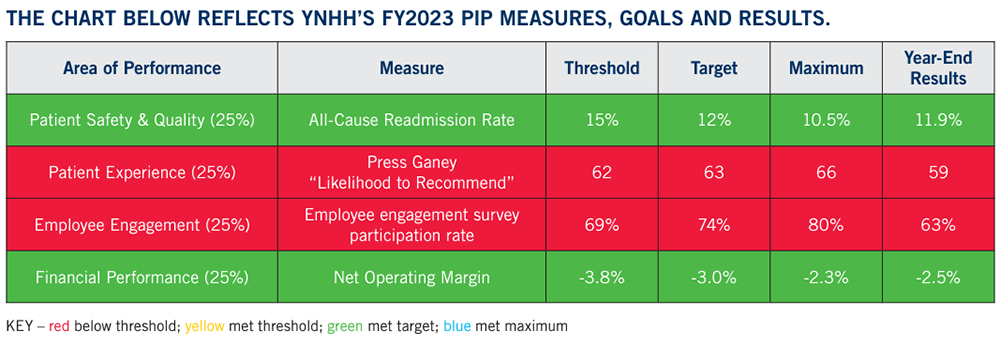YNHH employees earn PIP payout
In the midst of unprecedented challenges, Yale New Haven Hospital employees earned a 1.3 percent payout out of a possible maximum 3 percent of salary during fiscal year 2023, which ended Sept. 30. The PIP award, which is over and above any annual merit or pay increase, rewards employees for contributions toward reaching hospital goals.
To be eligible to participate in PIP, employees must work a minimum of 1,000 hours in fiscal year 2023 and be active employees as of Dec. 14, 2023, when PIP is paid.
PIP goals are tied to the health system’s strategic priorities and designed to improve performance in essential areas: quality/safety/patient experience (to deliver world-class care); employee engagement (to elevate a culture of excellence and accountability); and financial performance (to advance our financial sustainability).
The four hospital-wide areas of performance remain the same: patient experience, patient safety and quality, employee engagement and financial performance. Each area receives equal weight of 25 percent.
Yale New Haven Hospital PIP metrics for 2023 were:
- Press Ganey “Likely to Recommend”: Reflects patients’ perceptions of how well their needs were met by capturing the percentage who chose the most favorable score for the Press Ganey survey question “Likelihood to Recommend.”
- All-Cause Readmissions Rate: Reflects our ability to prevent unplanned readmissions through high-quality care delivery, effective care coordination and inter-disciplinary collaboration across our health system. This measure includes all patients, payers, and reasons for readmission.
- Employee Engagement Survey participation rate: The greater the number of employees who complete the survey, the more representative the feedback. The participation rate is the percentage of employees who complete the survey, out of all employees eligible to take it.
- YNHHS operating margin: Indicates our ability as a system to self-fund additional or expanded services from regular business operations by reflecting how much income remains after we cover our expenses. It includes operating revenue and expenses that are system-centralized but does not include non-operating revenue such as investments.


